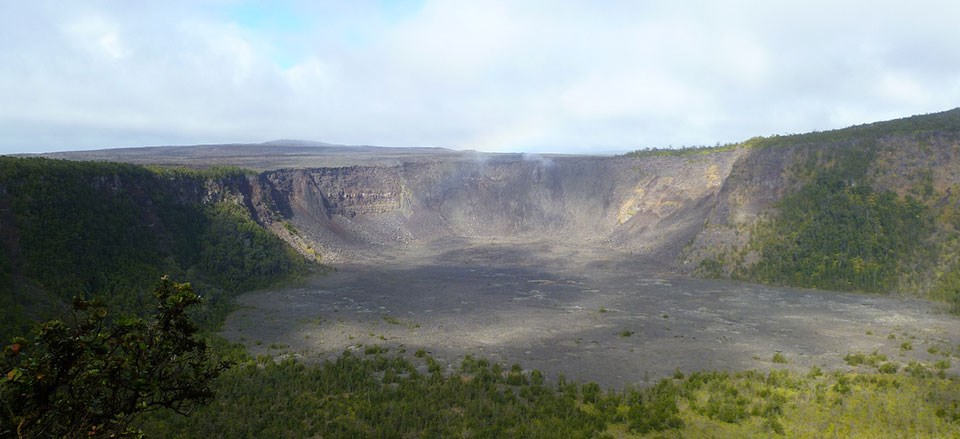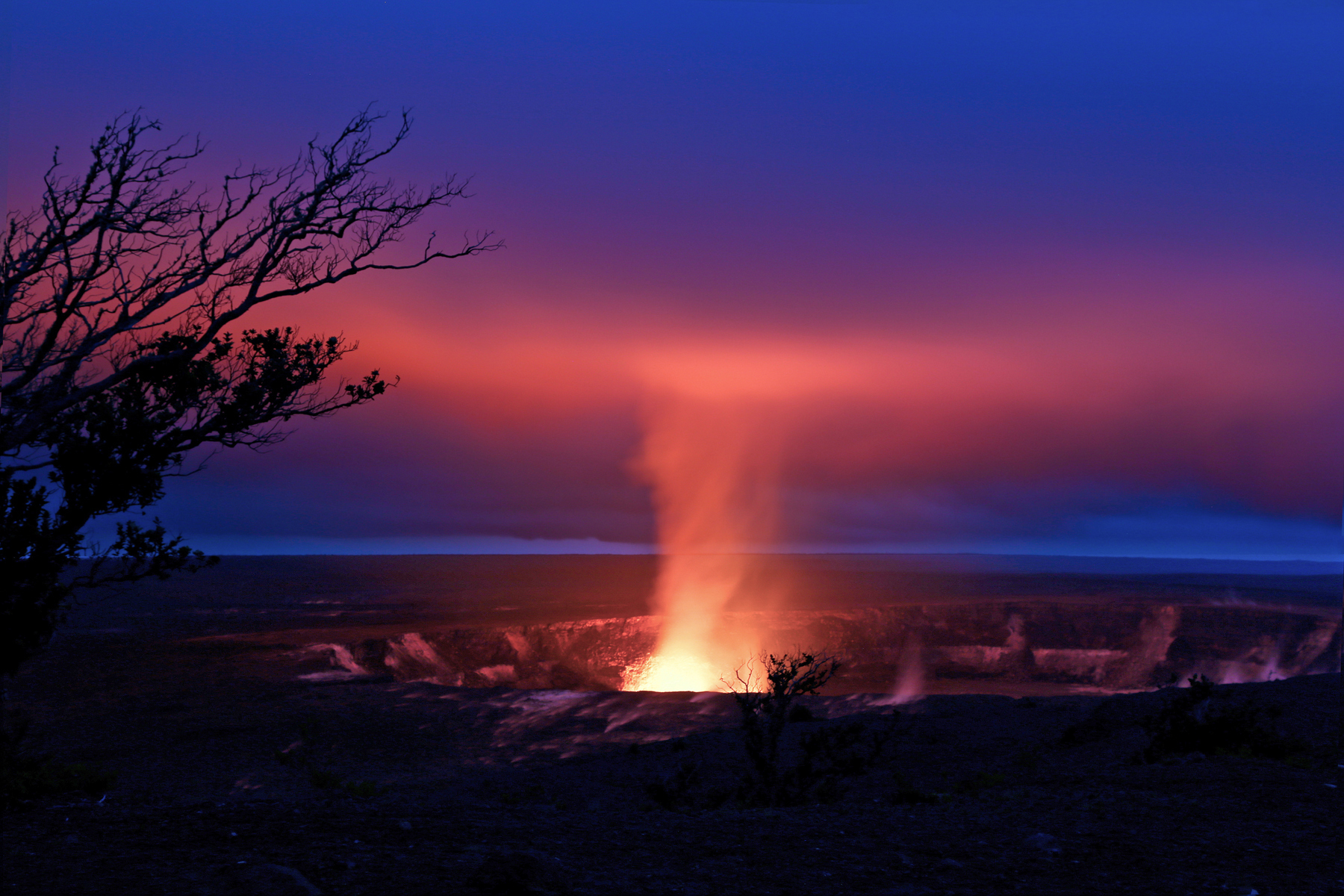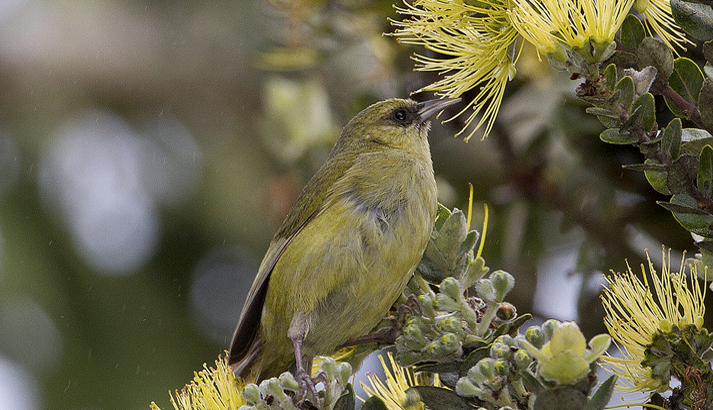There’s a quiet power that lives in Volcano—not loud or touristy, but ancient and alive. Set along the Southeast flank of Mauna Loa, the Volcano region feels more like a high-elevation rainforest than a lava-scoured desert. And yet, lava is everywhere—beneath your feet, shaping the trees, and just down the road inside Hawaiʻi Volcanoes National Park, where Kīlauea still pulses with creation.
This area isn’t just about eruption updates or steam vents—it’s about listening. Listening to birds in the morning mist, to native chants echoing across craters, to the crunch of cooled lava under your boots. Whether you stay for a day or make it your base for a deeper East Side adventure, Volcano offers something no resort can: a front-row seat to Earth in motion.

Volcano Village: Quiet, Cool, and Creative
Nestled in a forest of native ʻōhiʻa trees and ferns, Volcano Village is one of the most peaceful communities in Hawaiʻi. Just five minutes from the entrance to Hawaiʻi Volcanoes National Park, it feels worlds away from the beaches and bustle of Kona or Hilo.
Here, local artists run galleries out of converted homes, chefs source from backyard gardens, and small inns and cottages blend into the landscape. There’s no real “downtown,” just a collection of cozy stops along Old Volcano Road—like Volcano Art Center, Kīlauea Lodge, and a handful of cafes and farmers markets that carry the spirit of the land.
It’s the kind of place where you wake up to mist drifting through tree branches and fall asleep to the sound of rain on a tin roof.
Hawaiʻi Volcanoes National Park: Earth, Unfiltered

The main reason most visitors come to this region is Hawaiʻi Volcanoes National Park—and rightly so. It’s one of the few places on the planet where you can walk on new earth, witness a live crater glow, and feel the breath of a living volcano beneath your feet.
Highlights inside the park include:
- Kīlauea Crater: The main caldera where eruptions often begin. Nighttime visits can reveal glowing lava when active.
- Crater Rim Drive: A scenic route past steaming vents, lava fields, and panoramic overlooks.
- Nāhuku (Thurston Lava Tube): A short trail through an ancient lava cave surrounded by dense rainforest.
- Chain of Craters Road: A 19-mile drive that descends from the summit to the coast, ending at a dramatic sea cliff where lava once met the ocean.
The Kīlauea Visitor Center offers updates on volcanic activity, ranger talks, safety tips, and cultural insights that go far beyond geology.
Tip: Eruptions aren’t guaranteed. Lava flow visibility depends on current activity, which changes often. But even when things are quiet, the landscape itself tells a powerful story.
Mauna Loa, Kipuka, and Native Forest Trails
Volcano isn’t only about Kīlauea. The Mauna Loa side of the region offers incredible hikes and fewer crowds.
- Mauna Loa Lookout: Accessible by car, this overlook sits over 6,000 feet above sea level with sweeping views across the Southeast Rift Zone.
- Kīpukapuaulu Trail: A 1.2-mile loop through a “kipuka”—a pocket of untouched forest surrounded by ancient lava flows. Home to native birds, rare plants, and an incredible sense of peace.
- Birdwatching: This is one of the best places in Hawaiʻi to spot native forest birds like the ʻapapane, ʻamakihi, and ʻiʻiwi.
The elevation (around 4,000 ft) makes everything cooler—perfect for hikes and cozy evenings by the fire.

Southeast Coast: Puna District & Beyond
Volcano also acts as a gateway to the Puna District, a rugged region shaped by more recent flows.
- Kaimū Black Sand Beach: A newly formed beach on top of 1990 lava flows, now walkable and backed by coconut palms.
- Lava Tree State Monument: Preserved lava molds of trees—fascinating formations from past eruptions.
- Pāhoa Town: A quirky, eclectic village with a strong community vibe, local markets, and some of the best Thai food on the island.
This area was heavily impacted by the 2018 Kīlauea eruption, and visiting now supports local businesses rebuilding from that event.
When to Visit Volcano
Year-round: Volcano is cool and damp no matter the season—pack layers, including rain gear and long pants.
Winter (Dec–Mar): Crisp air, low-lying fog, and potential crater glow from Kīlauea. Great for hiking and photography.
Spring (Apr–May): Lush vegetation, blooming ʻōhiʻa, and fewer crowds in the park.
Summer (Jun–Aug): Drier months, best visibility for night sky viewing or crater walks.
Fall (Sep–Nov): Peaceful, green, and quiet—perfect for those seeking solitude or creative inspiration.
Essential Volcano Travel Tips
- Bring layers: Even in summer, nights can drop into the 50s°F (10–15°C).
- Book early: Lodging is limited and often booked months in advance—especially during active eruption periods.
- Stay informed: Check National Park alerts for eruption activity, closures, and safety guidelines.
- Travel slow: Roads are narrow, cell service is spotty, and this area rewards a patient pace.